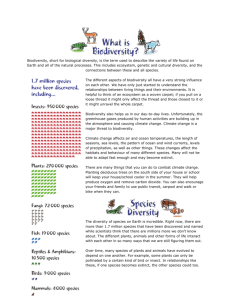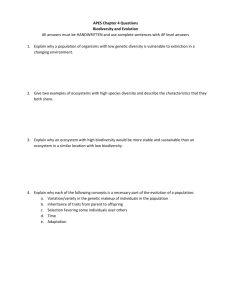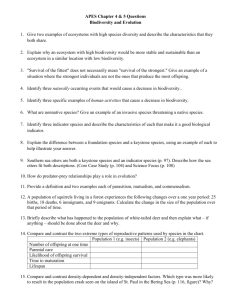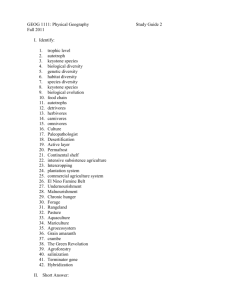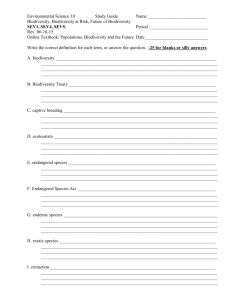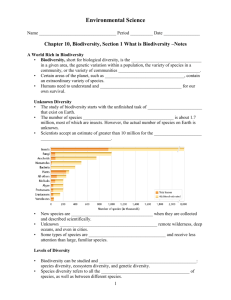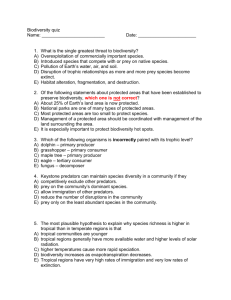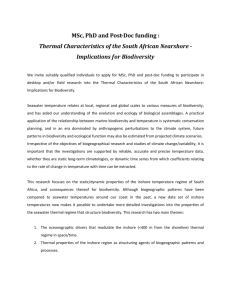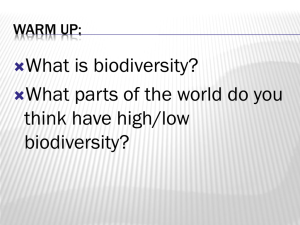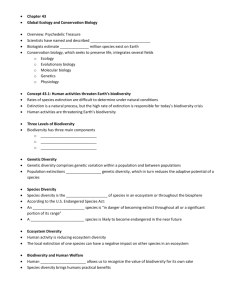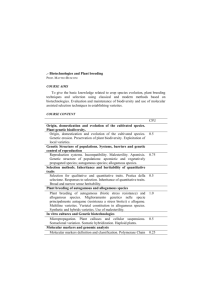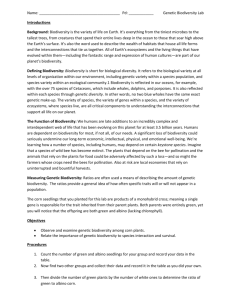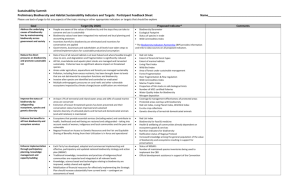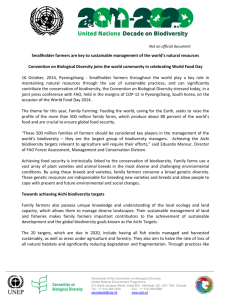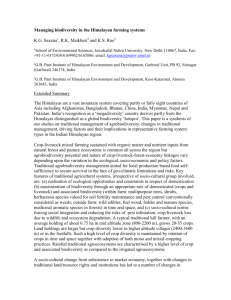Biodiversity 10.1 What is Biodiversity? Biodiversity is the variety of
advertisement
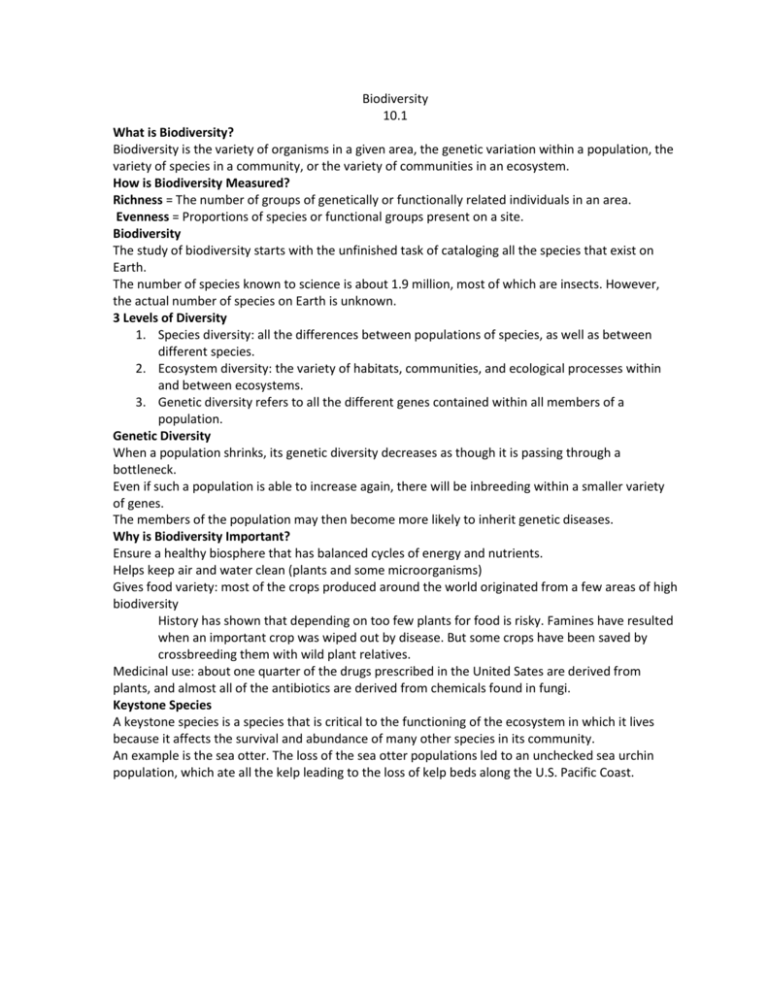
Biodiversity 10.1 What is Biodiversity? Biodiversity is the variety of organisms in a given area, the genetic variation within a population, the variety of species in a community, or the variety of communities in an ecosystem. How is Biodiversity Measured? Richness = The number of groups of genetically or functionally related individuals in an area. Evenness = Proportions of species or functional groups present on a site. Biodiversity The study of biodiversity starts with the unfinished task of cataloging all the species that exist on Earth. The number of species known to science is about 1.9 million, most of which are insects. However, the actual number of species on Earth is unknown. 3 Levels of Diversity 1. Species diversity: all the differences between populations of species, as well as between different species. 2. Ecosystem diversity: the variety of habitats, communities, and ecological processes within and between ecosystems. 3. Genetic diversity refers to all the different genes contained within all members of a population. Genetic Diversity When a population shrinks, its genetic diversity decreases as though it is passing through a bottleneck. Even if such a population is able to increase again, there will be inbreeding within a smaller variety of genes. The members of the population may then become more likely to inherit genetic diseases. Why is Biodiversity Important? Ensure a healthy biosphere that has balanced cycles of energy and nutrients. Helps keep air and water clean (plants and some microorganisms) Gives food variety: most of the crops produced around the world originated from a few areas of high biodiversity History has shown that depending on too few plants for food is risky. Famines have resulted when an important crop was wiped out by disease. But some crops have been saved by crossbreeding them with wild plant relatives. Medicinal use: about one quarter of the drugs prescribed in the United Sates are derived from plants, and almost all of the antibiotics are derived from chemicals found in fungi. Keystone Species A keystone species is a species that is critical to the functioning of the ecosystem in which it lives because it affects the survival and abundance of many other species in its community. An example is the sea otter. The loss of the sea otter populations led to an unchecked sea urchin population, which ate all the kelp leading to the loss of kelp beds along the U.S. Pacific Coast.

